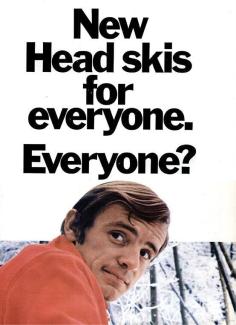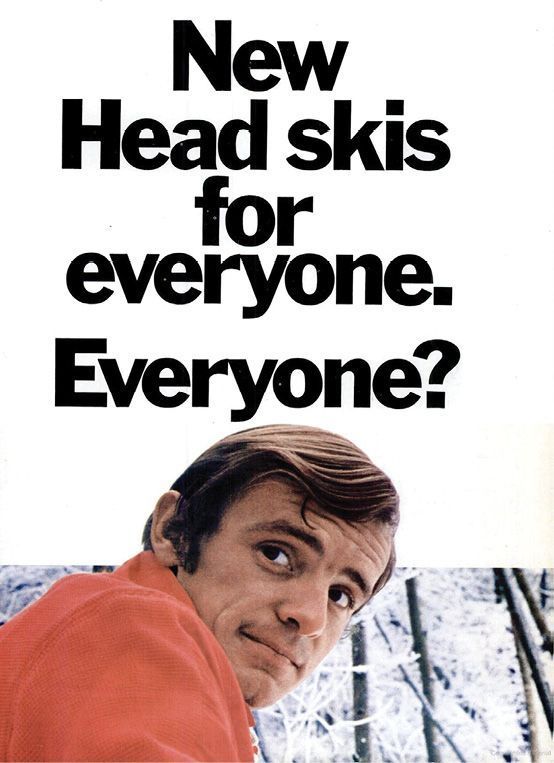Ads from the Past: Head signs Killy, 1969


This is the first page of a spectacular eight-page supplement inserted by Head into the September 1969 issue of SKI magazine. The following pages explained how Jean-Claude Killy and his ski-tech mentor, Michel Arpin, created the Killy 800 race ski. The real story is that Arpin left his job at Dynamic to work at Head’s factory near Baltimore. As the creator of Dynamic’s VR17 race skis, he wanted to build a similar fiberglass ski at Head.
But Head’s production line was set up to mass produce laminated aluminum skis. Head’s chief engineer, John Howe, had recently set up a new factory in Austria, where he hired some engineers from Kästle. That company had recently introduced the CPM, a smooth-gliding laminated ski using both fiberglass and aluminum sheets (the name stood for compound plastic-metal). Head adopted this compound construction for the Killy 800, using Arpin’s recommendations for flex and sidecut and the cracked-steel edge invented by Dynamic.
The result was a great ski on ice with race-winning glide speed. But the untested red phenolic topskins cracked in the dry air of the American Rockies, and warranty costs killed the ski. Besides, Head was sold that year to AMF, and the Maryland factory unionized. AMF closed the plant and moved production to Boulder, Colorado, where Howe engineered a new generation of fiberglass torsion-box skis. Killy turned pro a year later and captained the Rossignol race team.
Coming Up In Future ISSUES
1972 U.S. Olympic Biathlon Relay Team
A disparate group of young men from mountain towns banded together on an underfunded and ignored program, and achieved the best finish ever for the U.S. team.
Godfather of La Grave
In the freestyle movement, pioneers earned one-name recognition, like Shane and Glen and Doug. In La Grave, France, it’s Pelle, Nancy Bouchard reports.
Join our Facebook page: www.facebook.com/skiinghistory
